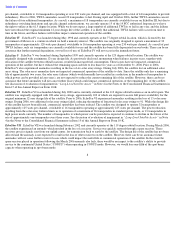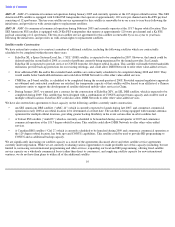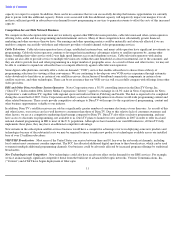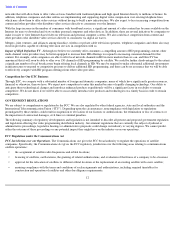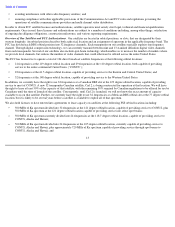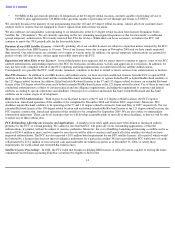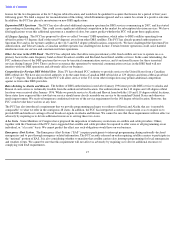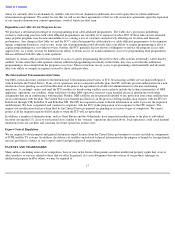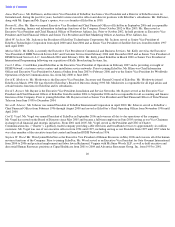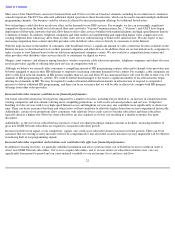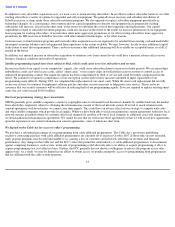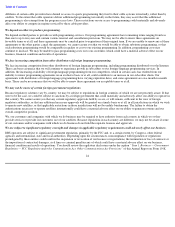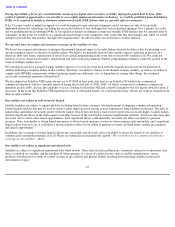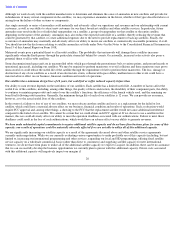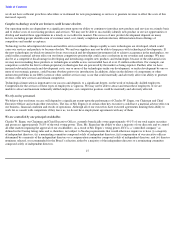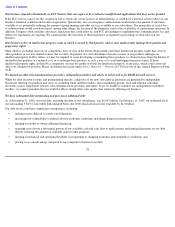Dish Network 2007 Annual Report Download - page 25
Download and view the complete annual report
Please find page 25 of the 2007 Dish Network annual report below. You can navigate through the pages in the report by either clicking on the pages listed below, or by using the keyword search tool below to find specific information within the annual report.
Table of Contents
cease developing or marketing those products, to obtain licenses from the holders of the intellectual property at a material cost, or to redesign
those products in such a way as to avoid infringing the patent claims. If those intellectual property rights are held by a competitor, we may be
unable to obtain the intellectual property at any price, which could adversely affect our competitive position.
We may not be aware of all intellectual property rights that our products may potentially infringe. In addition, patent applications in the United
States are confidential until the Patent and Trademark Office issues a patent and, accordingly, our products may infringe claims contained in
pending patent applications of which we are not aware. Further, the process of determining definitively whether a claim of infringement is valid
often involves expensive and protracted litigation, even if we are ultimately successful on the merits.
We cannot estimate the extent to which we may be required in the future to obtain intellectual property licenses or the availability and cost of
any such licenses. Those costs, and their impact on our results of operations, could be material. Damages in patent infringement cases may also
include treble damages in certain circumstances. To the extent that we are required to pay unanticipated royalties to third parties, these
increased costs of doing business could negatively affect our liquidity and operating results. We are currently defending multiple patent
infringement actions. We cannot be certain the courts will conclude these companies do not own the rights they claim, that our products do not
infringe on these rights, that we would be able to obtain licenses from these persons on commercially reasonable terms or, if we were unable to
obtain such licenses, that we would be able to redesign our products to avoid infringement. See “Item 3 – Legal Proceedings.”
ENVIRONMENTAL REGULATIONS
We are subject to the requirements of federal, state, local and foreign environmental and occupational safety and health laws and regulations.
These include laws regulating air emissions, water discharge and waste management. We attempt to maintain compliance with all such
requirements. We do not expect capital or other expenditures for environmental compliance to be material in 2007 or 2008. Environmental
requirements are complex, change frequently and have become more stringent over time. Accordingly, we cannot provide assurance that these
requirements will not change or become more stringent in the future in a manner that could have a material adverse effect on our business.
SEGMENT REPORTING DATA AND GEOGRAPHIC AREA DATA
For operating segment and principal geographic area data for 2006, 2005 and 2004 see Note 10 in the Notes to the Consolidated Financial
Statements in Item 15 of this Annual Report on Form 10-K.
EMPLOYEES
We had approximately 21,000 employees at December 31, 2006, most of whom are located in the United States. We generally consider
relations with our employees to be good.
Although a total of approximately 33 employees in two of our field offices have voted to unionize, we are not currently a party to any collective
bargaining agreements. However, we are currently negotiating collective bargaining agreements at these offices.
WHERE YOU CAN FIND MORE INFORMATION
We are subject to the informational requirements of the Exchange Act and accordingly file our annual report on Form 10-K, quarterly reports
on Form 10-Q, current reports on Form 8-K, proxy statements and other information with the Securities and Exchange Commission (“SEC”).
The Public may read and copy any materials filed with the SEC at the SEC’s Public Reference Room at 450 Fifth Street, NW, Washington,
D.C. 20549. Please call the SEC at (800) SEC-0330 for further information on the Public Reference Room. As an electronic filer, our public
filings are also maintained on the SEC’s Internet site that contains reports, proxy and information statements, and other information regarding
issuers that file electronically with the SEC. The address of that website is http://www.sec.gov.
18


